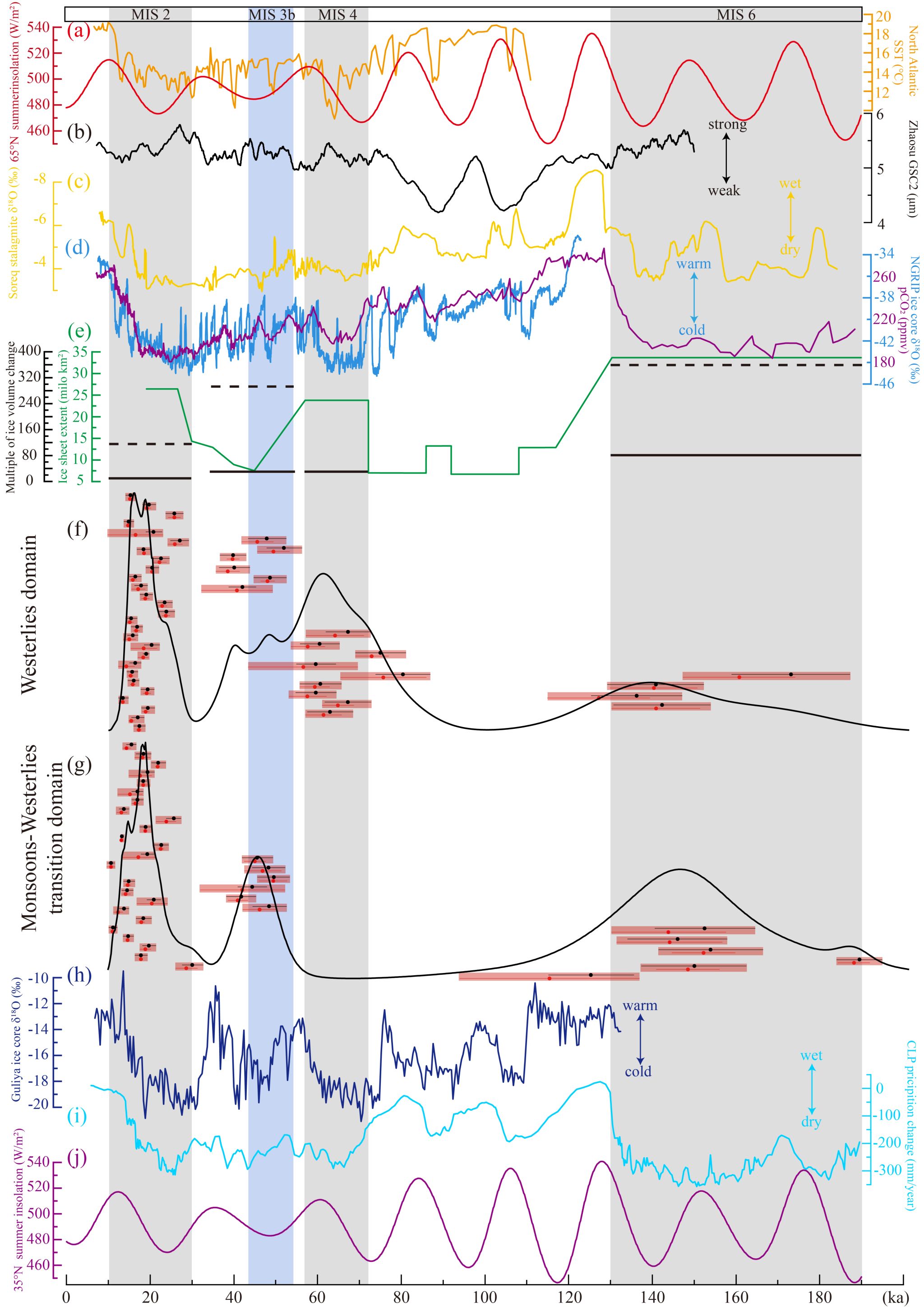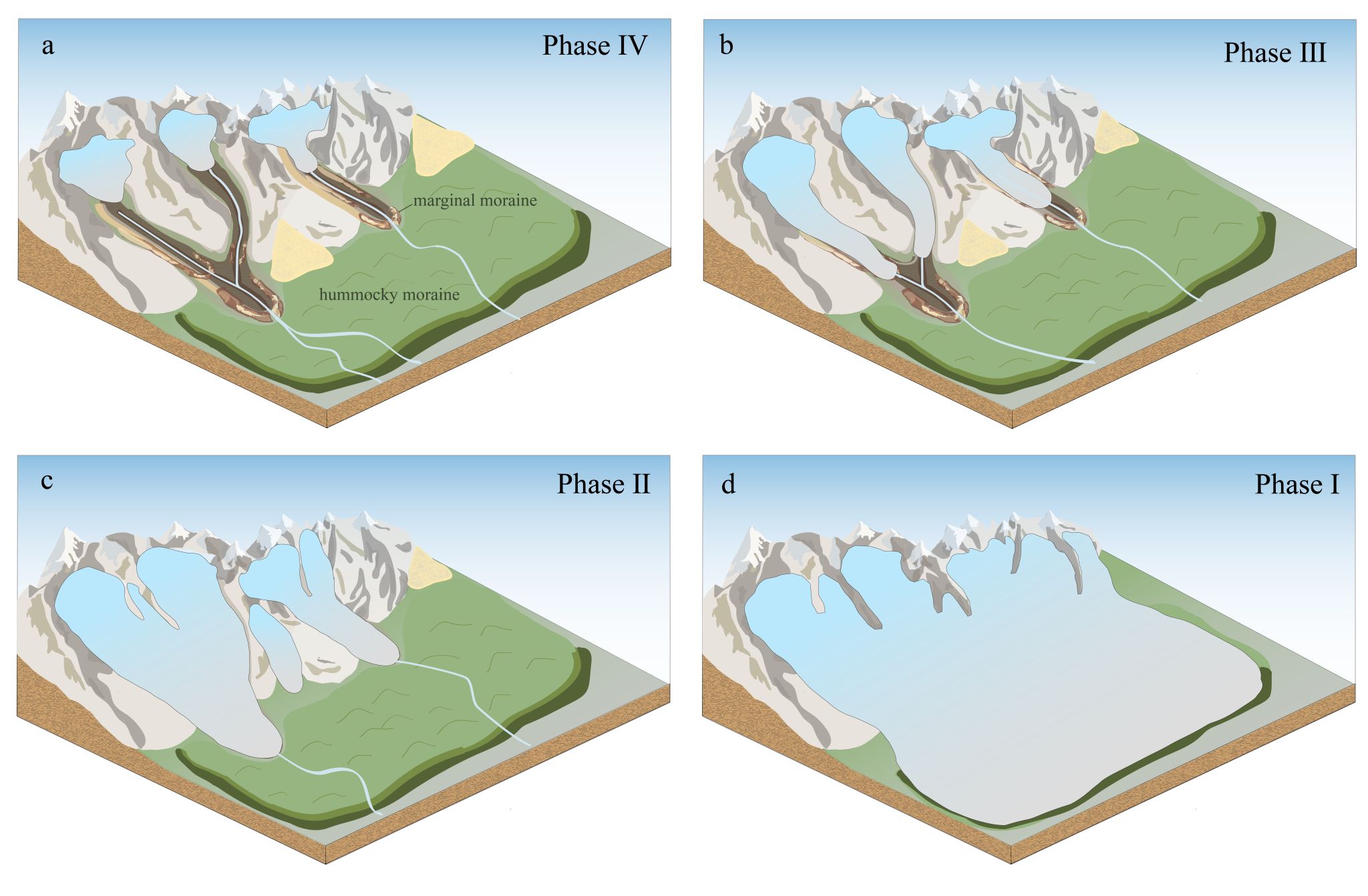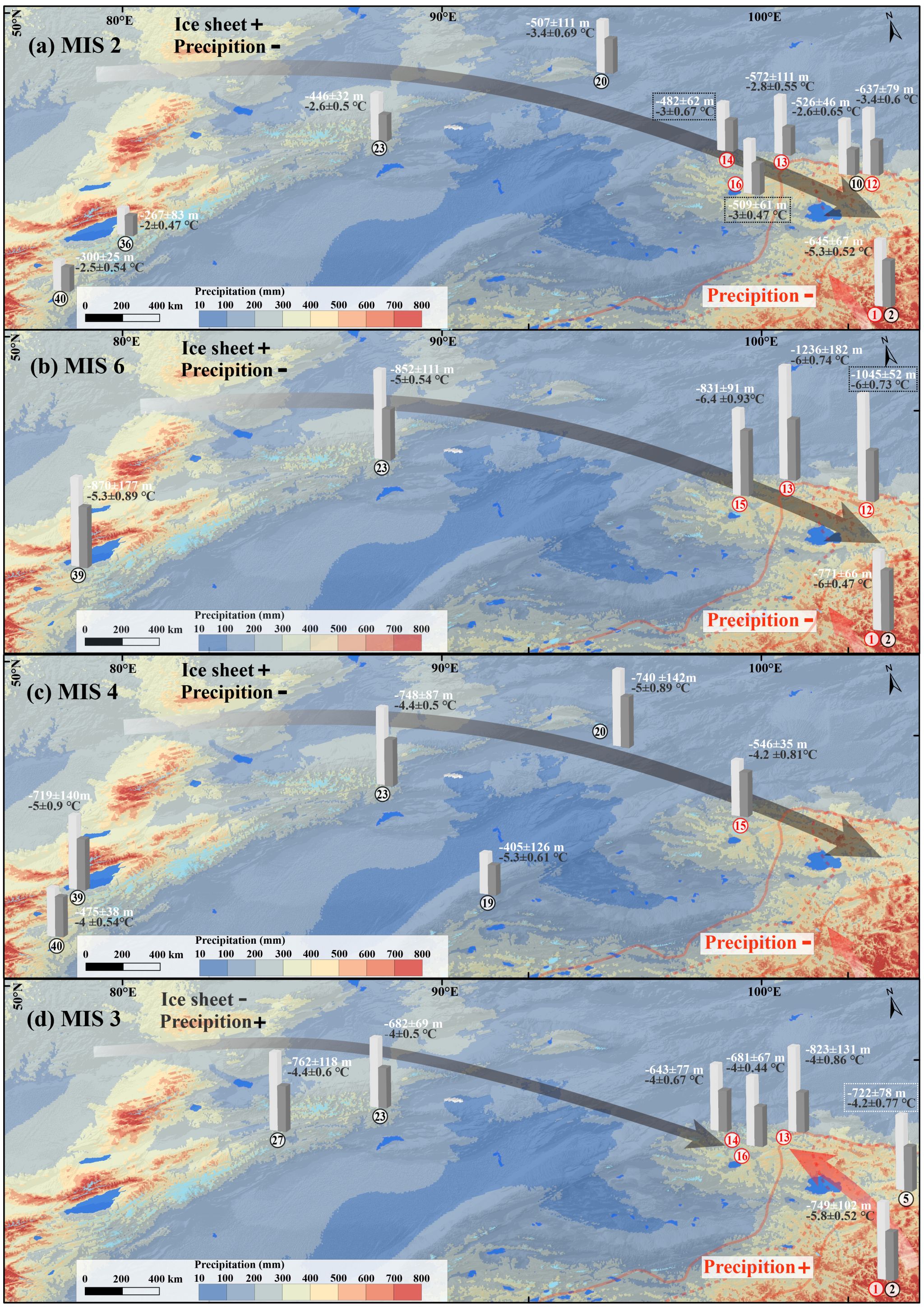The northern part of High Mountain Asia is primarily located in semi-arid regions, where the modern glaciers occupy only a very small portion of the area. However, the widespread presence of glacial landforms in this region indicates that these glaciers underwent several large-scale expansions during Quaternary glacial periods. Thus, Quaternary glacial evolution has had a profound impact on landforms, rivers, lakes, and ecosystems. Due to the lack of reliable glacial geomorphological dating in key areas and unified chronological analysis methods, the spatiotemporal pattern of Quaternary glaciation in northern High Mountain Asia at a regional scale remains unclear. Furthermore, the climate in northern High Mountain Asia is mainly influenced by the mid-latitude westerlies and the Asian monsoon. During glacial-interglacial cycles of the Quaternary, the eastern part of the region could even be alternately controlled by westerlies and monsoons, adding further complexity to glacier evolution.
Recently, Professor Wang Jie’s team from the College of Earth and Environmental Sciences, Lanzhou University, published a research article in the well-known Earth science journal Earth-Science Reviews, titled "Timing and extent of glaciation in northern High-Mountain Asia during the Middle and Late Pleistocene". Ph.D. student Wang Weicheng from the College of Earth and Environmental Sciences, Lanzhou University, is the first author, and Professor Wang Jie is the corresponding author. This work was supported by the National Natural Science Foundation of China (projects 42371131 and 41971003).

Fig.1 Comparison of Middle and Late Pleistocene glacial chronology in northern High Mountain Asia with regional/global climate
This paper, based on systematic dating of Pleistocene glaciation in key regions (8110Be samples), comprehensive compilation and recalculation of existing data (36610Be exposure ages), robust analytical methods (P-PDE), and high-resolution glacier extent simulations, clarifies the spatiotemporal characteristics of glacial evolution in the mid-latitude westerlies-controlled region and the monsoon-westerly transition zone of northern High Mountain Asia during the Middle and Late Pleistocene. It reveals that precipitation fluctuations caused by changes in atmospheric circulation systems were the key trigger for the asynchronous spatiotemporal evolution of glaciers on glacial-interglacial timescales. Given the extensive Quaternary glaciation in northern High Mountain Asia and its profound influence on landform and ecological landscapes, this research provides important support for more systematic studies of interactions among surface spheres.
The study finds that the two atmospheric circulation-controlled zones in northern High Mountain Asia exhibit similar patterns in the spatiotemporal characteristics and driving mechanisms of glacial evolution. Glacial expansions corresponding to MIS6, MIS3, and MIS2 are identified in both climatic zones. The scale of glaciation progressively decreased—from ice sheets to piedmont glaciers, valley glaciers, and finally cirque glaciers. Decreased summer insolation in the Northern Hemisphere and lower CO₂ concentrations were the main driving forces for this series of glacial advances. However, the timing of local last glacial maxima (lLGM) in the monsoon-westerly transition zone and the westerly zone was asynchronous, occurring in MIS3 and MIS4, respectively. Variations in the relative intensity of atmospheric circulation systems and the resulting precipitation fluctuations are considered the key factors for the asynchronous glacier evolution in the two regions.

Fig.2Schematic model of glacier evolution in northern High Mountain Asia since MIS6
The paper also emphasizes that future paleo-glacier studies in northern High Mountain Asia should focus on tracing the oldest glacial periods, short-term fluctuations in the Holocene, and high-resolution glacier reconstructions at broad spatial scales.

Fig.3 Equilibrium Line Altitude (ELA) and cooling magnitude of glaciers in northern High Mountain Asia during the Middle and Late Pleistocene
Paper link:https://doi.org/10.1016/j.earscirev.2025.105089